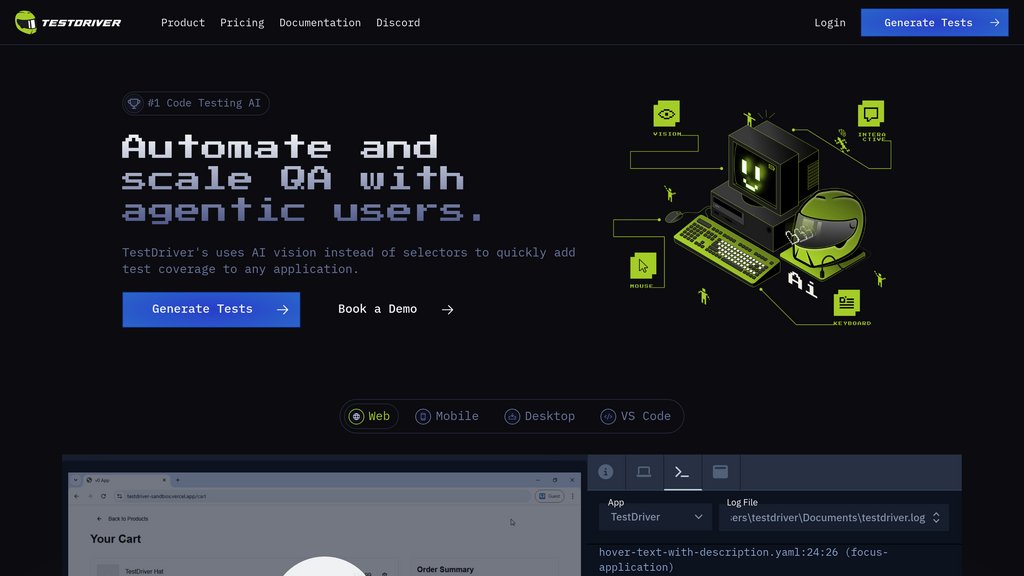TestDriver
Visual testing platform that autonomously creates end-to-end tests without code selectors
Introduction
What is TestDriver?
TestDriver is a cutting-edge quality assurance automation solution that redefines software testing by moving beyond conventional CSS selectors and XPath. It leverages advanced computer vision and natural language understanding to engage with software interfaces just as a person would. The system autonomously builds extensive test suites by scanning applications, produces resilient tests that adjust to visual modifications, and fits effortlessly into continuous integration and delivery workflows. It is capable of validating a wide array of platforms such as web apps, desktop programs, browser add-ons, and intricate components including canvases and embedded frames.
Key Features
Universal Platform Support
Validates desktop software, browser extensions, chatbots, file uploads, video players, and complex web components that are typically challenging for standard testing tools.
Selectorless Testing
Navigates applications using visual recognition and plain English commands, similar to a human, doing away with unstable selector-dependent tests that fail with interface updates.
Automatic Test Generation
Explores applications independently and creates investigative tests through natural language prompts, delivering complete test packages via pull requests.
Self-Healing Tests
Dynamically adjusts to user interface alterations such as layout shifts, color updates, and form changes without requiring manual updates or test corrections.
CI/CD Integration
Connects smoothly with GitHub Actions, Vercel, and Netlify deployments, featuring automated PR checks and planned test executions.
Use Cases
Rapid Test Coverage: Development teams can swiftly attain broad test coverage for new functionalities or existing systems without writing large amounts of test code.
Regression Testing: Automatically identify user interface regressions and functional disruptions across various browsers and deployment phases.
Complex Application Testing: Evaluate applications with dynamic content, single-page apps, progressive web apps, and interactive features that are problematic for conventional tools.
Continuous Quality Assurance: Uphold consistent quality during fast-paced development cycles with automated tests that evolve alongside frequent UI revisions.
Cross-Platform Validation: Verify performance across web, desktop, and browser extension environments using a single, cohesive testing methodology.
